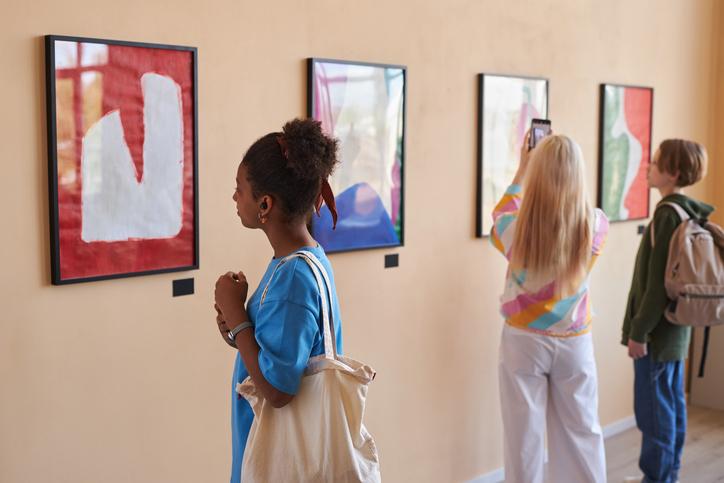Misogyny and hegemonic masculinity remain deeply embedded in public life and institutional practices. It’s an issue that needs urgent attention, given how far the social consequences could reach. Misogyny takes many forms, such as discrimination, gender-based violence and the devaluation of women’s voices. It continues to shape everyday experiences, limit opportunities and reinforce inequality between the genders. Nine in 10 people hold some form of gender bias, according to a UN Woman global study in 2023, and over 50 per cent of men surveyed across 75 countries believe men make better political leaders. This shows how pervasive the gender stereotypes sustaining institutional misogyny are.
Drawing on two decades of my research into gender, power and visual culture, I argue that misogynistic ideology is not confined to isolated groups or communities. It’s a systemic global issue, embedded in both formal and informal learning environments, as well as reinforced through digital ecosystems and popular culture.
Hegemonic masculinity promotes narrow and often harmful ideals of male dominance, emotional suppression and aggression. It can be manifested through bullying, verbal intimidation and dominance behaviours among boys and young men to assert hierarchy. These not only marginalise women and gender-diverse individuals but also constrain men by discouraging vulnerability, empathy and emotional expression.
Universities, as sites of knowledge production, are ideally positioned to challenge these dynamics. Here, I’ll look at how higher education can respond through curriculum design that embeds critical arts and media literacy and, at the same time, encourages creative student engagement.
Critical arts and media literacy
Successful pedagogy exists within a learning culture that encourages students to think critically and engage actively with the world around them. Students are not passive recipients of knowledge – instead, they're invited to question dominant cultural representations and challenge the assumptions embedded within them.
- Shifting landscapes of social media data for research
- Inclusive pedagogy: using multimedia as a tool to enhance and transform assessment
- Use art to cultivate business students’ understanding of climate change
This involves teaching critical art and media literacy, where students learn to deconstruct media messages, analyse deep fakes and the power structures behind them, and recognise how they shape and perpetuate societal norms, particularly around gender and power.
This approach also embraces embodied education: encouraging learners to reflect on their sensory and emotional responses and connect personal experience with academic inquiry. This helps foster a deeper, more holistic understanding of how cultural narratives are produced and consumed.
Experiential learning through exhibitions, screenings and place-based engagement can be a powerful way to prompt critical thinking around identity, gender and power. Here’s why it matters:
- Art makes power visible, often reflecting and critiquing our societal norms, including gender roles and inequalities. By analysing visual culture, students can uncover how misogyny is embedded in everyday imagery and how artists resist through creative practice.
- Art engagement is embodied and emotional, not just intellectual. Learning that includes physical, sensory and emotional experience can build empathy and deepen understanding, especially when tackling difficult topics like gender-based violence or discrimination.
- In a media-saturated world, young people need tools to decode the images and messages they receive daily. Art provides a rich site for teaching visual literacy, including how to read symbolism, composition and context, and how to question representation more generally.
- Incorporating creative practice into teaching allows students to respond creatively to misogyny. Through photography, visual storytelling, performance, poster or installations, students can express resistance, solidarity and hope for change.
- Exhibitions and community engagement expand the conversation. Place-based learning helps students to encounter alternative narratives and lived experiences. These spaces invite a dialogue, reflection and activism, making learning more relevant for today’s world, giving students greater agency and making them more socially engaged.
Impactful exhibitions highlight the work and voices of people often overlooked by mainstream media, including women, migrants and non-binary artists. The 2025 touring exhibition WOMEN IN REVOLT! Art, Activism and the Women’s Movement in the UK 1970–1990, directly confronts misogyny and gender inequality through powerful artistic expression. It offers valuable teaching material, illustrating how feminist artists have resisted oppression and reimagined gender roles through protest and creative action.
Reshaping curriculum
Integrating critical arts and media literacy in the curriculum goes beyond understanding media and cultural content. It’s about engaging with, analysing, questioning and challenging the power structures, ideologies and messaging that shapes what we see, hear and experience.
Below are six practical strategies for reshaping learning through this lens:
1. Deconstructing visual culture and advertising critique
Have your students analyse and deconstruct advertising to uncover how gender roles, beauty standards or consumerism in general are portrayed, such as how masculinity is linked to dominance or how representations of femininity is tied to appearance. Artists like Barbara Kruger, whose iconic text-based works confront power, identity and misogyny in bold, accessible formats, or Linder’s radical photomontages addressing commodification of the female body are particularly resonant for young people familiar with digital media and social critique.
2. Exploring film through representation analysis
Spark a debate on how gender is portrayed in film, discussing stereotypes, character agency and narrative roles. Barbie (2023) provides a satirical and self-aware take on gender roles, stereotypes and societal expectations, sparking widespread debate on feminism and masculinity. Persepolis (2007), an animated autobiographical film about a young Iranian girl growing up during and after the Islamic Revolution, tackles themes of identity, resistance and gender constraints.
3. Analysing social media trends
Set your students a task to investigate how platforms like TikTok and Instagram both reinforce and challenge misogyny. This could involve analysing gendered language in comment sections, viral trends or influencer culture. Activities like meme analysis or hashtag tracking can help learners identify patterns in online discourse and develop strategies for resisting toxic narratives.
4. Critically study news coverage
Have students compare how different media news outlets report on topics like gender-based violence or political figures, identifying differences in bias, framing and language use. This helps build media literacy and challenges assumptions.
5. Creative remaking
Encourage students to produce their own media counter-narratives. Making their own videos, podcasts, memes or zines that promote inclusivity and challenge hegemonic masculinity. This not only allows creative expression but also helps students take ownership of their learning.
6. Examine algorithms and platforms
Discuss how recommendation systems on platforms like YouTube or TikTok may amplify misogynistic content. Encourage debate on what digital literacy means in this context.
Young people are constantly navigating dynamics around gendered power structures in both classroom interactions and online communities. Addressing these issues requires more than a policy reform; it demands a pedagogical innovation that equips learners with the tools to help them to critically examine and resist harmful narratives.
By embedding critical art and media literacy into the curriculum, educators can help dismantle misogynistic ideologies while fostering inclusive, reflective and socially engaged learning environments. This approach has the potential to empower students to become active participants in shaping a more equitable society, within and beyond the classroom.
Katarzyna Kosmala is chair in culture, media and visual practice at the University of the West of Scotland.
If you’d like advice and insight from academics and university staff delivered direct to your inbox each week, sign up for the Campus newsletter.




comment